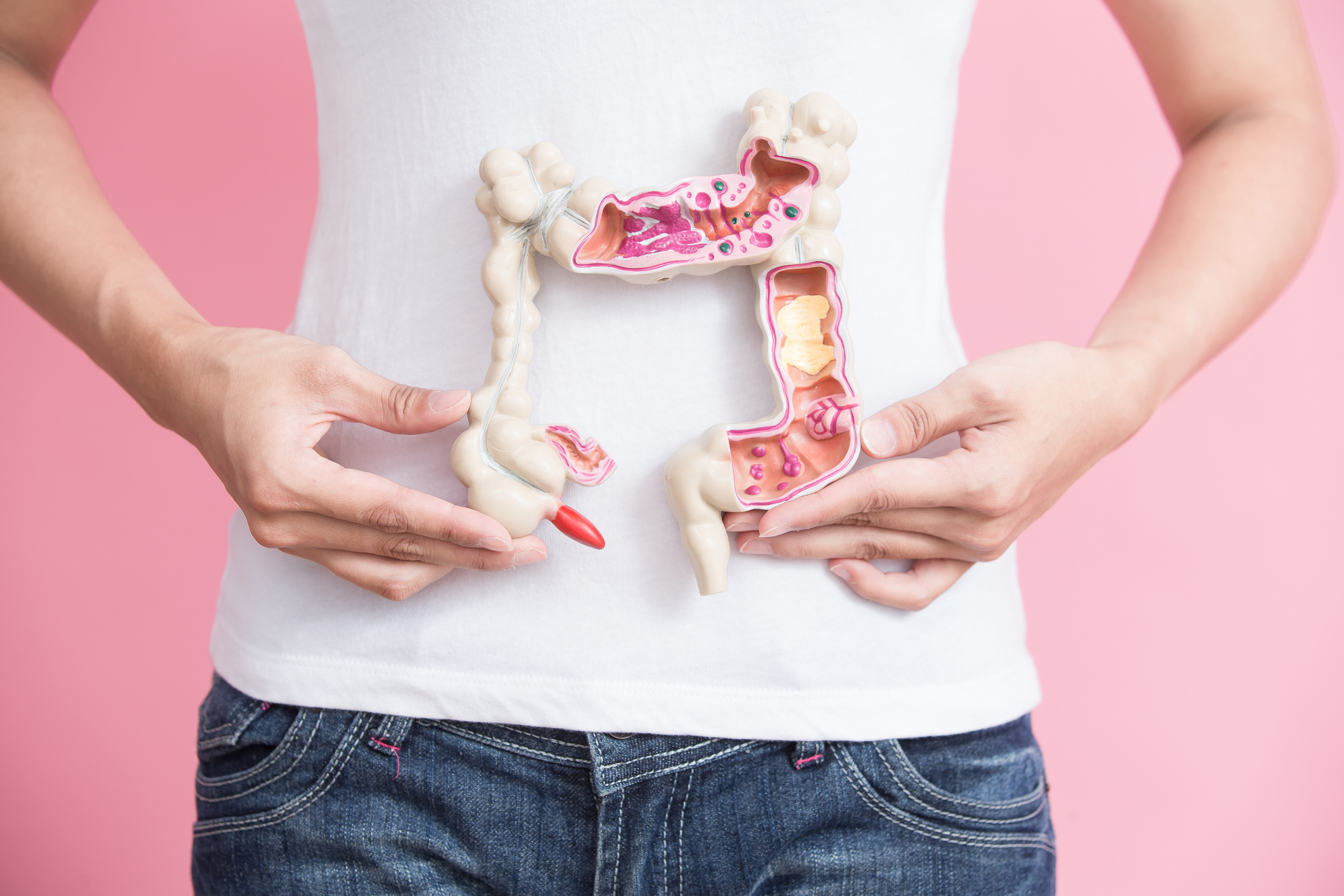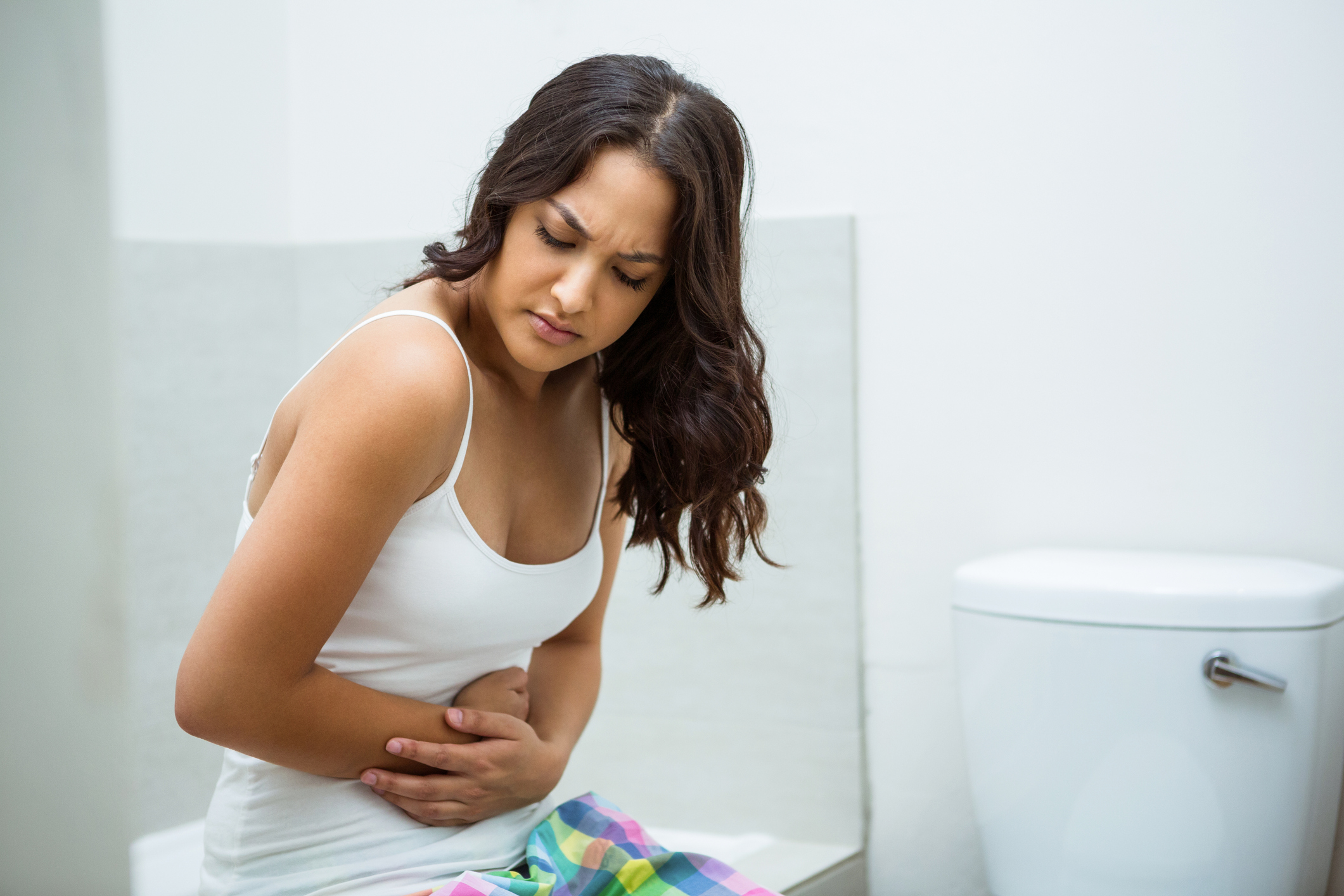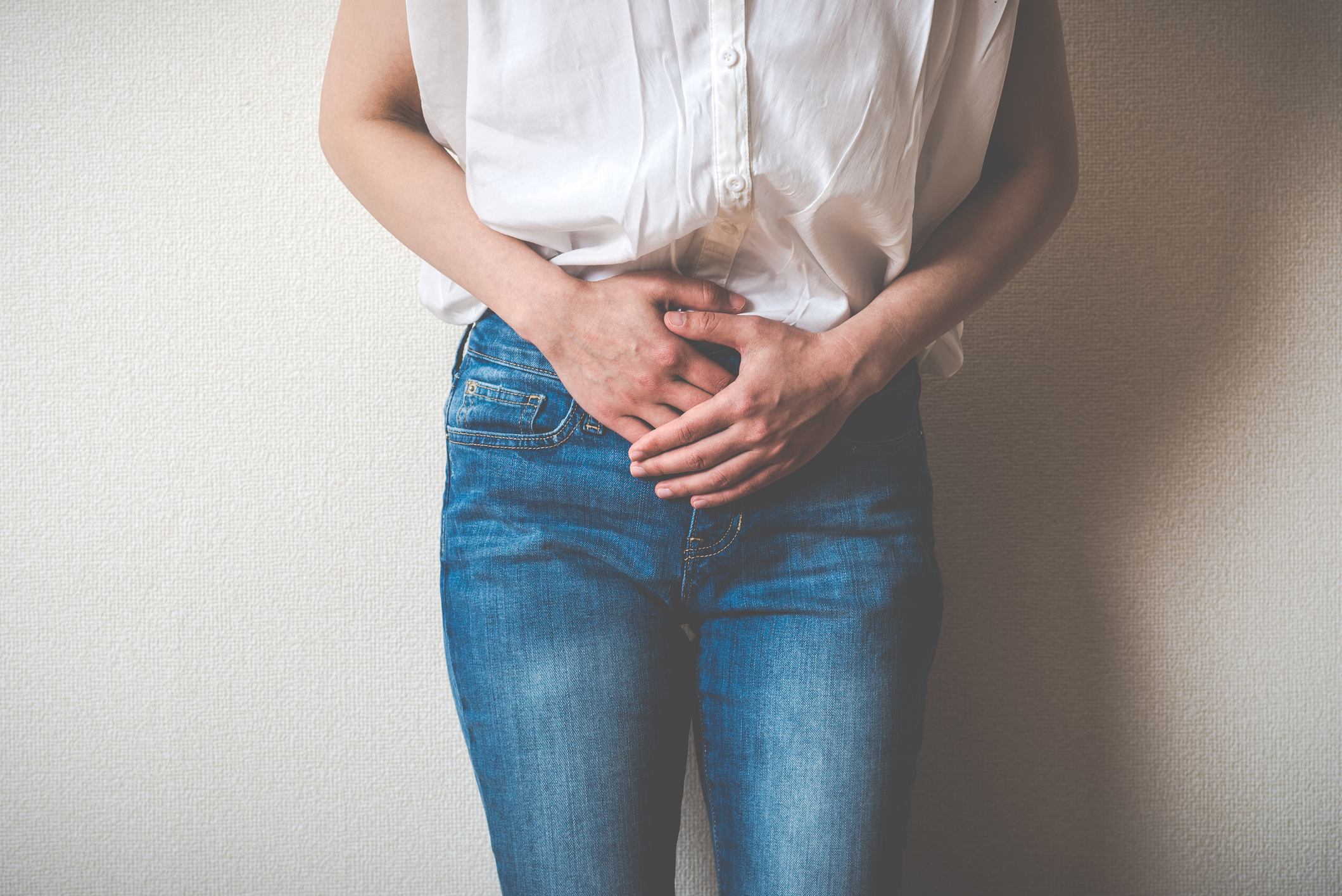Modern lifestyles filled with nutrient poor diets, chronic stress and little down time can wreak havoc on hormones. Most of my clients come to me with hormonal issues such as HPA axis dysfunction, period irregularities, fertility issues, bad PMS and/or estrogen dominance. Sometimes all the above!
Women with hormone dysfunction and estrogen dominance who fail to respond to diet and lifestyle interventions are usually not addressing one huge factor that effects hormone metabolism: their gut microbiome.
Gut infections and dysbiosis are common culprits of hormone imbalances like estrogen dominance that often go unaddressed.
Estrogen dominance occurs when there is an excess of estrogen compared to progesterone in the luteal phase of the ovarian cycle.
Estrogen levels are supposed to be low in comparison to progesterone during this phase, but gut bacteria can wreak havoc on this balance. That’s why it’s so important to look at gut health when you’re struggling with the symptoms of estrogen dominance, which include:
- bloating
- breast swelling and tenderness
- fibrocystic lumps in your breasts
- decreased sex drive
- irregular periods
- increased premenstrual syndrome (PMS)
- mood swings
- headaches
- anxiety and panic attacks
- weight gain
- hair loss
- cold hands or feet
- trouble sleeping
- sleepiness or fatigue
- poor memory
It’s be difficult to connect hormone dysfunction to gut imbalances if you don’t have any gut symptoms. But failing to treat an unidentified gut problem can prevent progress in achieving hormonal balance and optimal estrogen levels.
In this post, I’ll explain how bacteria in the gut are pivotal in keeping your hormones in balance, particularly when it comes to normalizing your estrogen levels.
What is the estrobolome?
With research about the microbiome exploding, the role of gut bacteria in hormone metabolism has become better understood. The microbiome is one of the hottest health topics around these days, but few people are talking about the hormone regulating part of the microbiome, known as the “estrobolome”.
The estrobolome is a term used to describe the collection of enteric bacterial genes that are capable of metabolizing estrogens. To maintain estrogenic harmony, you must have the right amount of estrogen metabolizing bacteria in your gut.
Humans have co-evolved with their gut microbes, creating a complex intricate relationship. This synergy benefits the host while allowing the microbiota to thrive, creating a symbiotic relationship.
But when the gut becomes imbalanced systemic inflammation ensues, which promotes disease and hormone dysfunction.
Rebalancing any disturbances in the estrobolome is necessary to correct hormone imbalance and to solve estrogen dominance.

How gut bacteria Affects estrogen metabolism
Bacteria that make up the estrobolome can primarily effect estrogen metabolism by promoting or preventing estrogen excretion from the body.
To be excreted from the body, circulating estrogens must be conjugated in the liver through a process called glucuronidation. This process involves the addition of a glucuronic acid to the estrogen making it water soluble, which allows for the excretion of the conjugated estrogen.
These conjugated estrogens are then excreted via the bile, urine and feces. Studies that injected subjects with radioactively labelled estrogens found that 65% of the injected estrogen was recovered in the bile, which is released from the liver into the intestines to be excreted.
But only 10-15% of the labelled estrogens are actually excreted through the feces. A biologically significant portion of estrogens are reabsorbed into the circulation via the intestines. The mediators of this reabsorption is our intestinal bacteria.
In other words, your bacteria determine how much estrogen gets re-absorbed from the gut.
The bacteria that make up the estrobolome are unique because they produce the enzyme beta-glucuronidase that can deconjugate estrogens.
Upon leaving the liver, conjugated estrogens in the bile are released into the intestines and can be deconjugated by beta glucuronidase producing bacteria. This deconjugation unbinds the estrogen making it active and preventing its excretion.
As a result, the estrogens are reabsorbed through the GI tract where they then re-circulate in the blood. The estrogen can then bind to estrogen receptors and exert its physiological effects.
To have a healthy estrogen metabolism you need to have the right amount of beta-glucuronidase producing bacteria. Too much beta-glucuronidase will result in an excess of circulating estrogens, while too little beta-glucuronidase will result in an estrogen deficiency.
Pathogenic infections and overgrowths also have the potential to disturb estrogen metabolism independent of beta-glucuronidase activity.
Pathogenic gut bacteria produce endotoxins (LPS or lipopolysaccharides) that are released into the bloodstream and create systemic inflammation. This inflammation elicits a prolonged activation of the HPA axis.
Elevated cortisol from endotoxins can lead to dysregulated sex hormone levels – especially estrogen dominance. This can be due to an increase in estrogen, a decrease in progesterone, or both.
If you have stubborn hormone issues, I highly recommend doing stool testing to measure beta glucuronidase activity and to rule out any pathogens. I recommend the GI MAP test to my clients.

HORMONAL Consequences of an Unhealthy GUT
Long-term disturbances in estrogen metabolism can lead more serious estrogen related diseases and conditions. Here are just a few of the potential problems that can arise from a chronically disturbed gut microbiome.
Hormone-related cancers
As Chris Kresser points out in this article, there is growing evidence linking certain hormone related cancers to gut imbalances.
High levels of circulating estrogens from overactive beta-glucuronidase activity could promote cell growth and tumor growth on estrogen-sensitive tissues in the breasts, ovaries, endometrium, and the cervix.
Even prostate cancer is associated with microbial dysbiosis. There is also some evidence that disturbances in estrogen metabolism plays a role in prostate cancer.
The research even suggests that the estrobolome could become an important biomarker for cancer risk. Interventions that modulate beta-glucuronidase to lower the risk of hormone driven cancers have also been suggested.
PCOS
Polycystic ovarian syndrome or PCOS is a condition characterized by high androgens, anovulation (lack of ovulation) and alterations in gut microbiota. Researchers are paying more attention to the estrobolome and its potential role in PCOS.
Researchers hypothesize that altered gut microbiota drive PCOS through low beta glucuronidase activity that lowers circulating estrogens and by promoting androgen production. Providing further support for this hypothesis, fecal microbiota transplants from healthy rats into rats with PCOS resulted in improvements in the hormonal profiles of the rats with PCOS.
Endometriosis
Endometriosis is another condition associated with altered gut microbiota. Endometriosis is a condition where tissue that normally lines the uterus (endothelial tissue) starts to grow outside of the uterus. Circulating estrogen appears to promote the development of endometriosis.
Larger amounts of beta-glucuronidase producing bacteria could exacerbate endometriosis by raising the level of circulating estrogens.
Disturbances of microbiota are not exclusive to the digestive tract of women with endometriosis, as vaginal and endothelial bacteria are also usually altered. An increase in pathogenic bacteria and a decrease in good bacteria in the vaginal tract have been seen in women with endometriosis.
These microbial alterations could be promoting high estrogen levels and inflammation that could be playing a key role in the development and progression of endometriosis.
Osteoporosis
Estrogens play a critical role in the growth and maturation of bones. Estrogens help keep bones healthy by inhibiting osteoclasts, the cells responsible for breaking down bone. Low estrogen levels are one of the major causes of low bone density in amenorrhea.
Would you like to save this post?
Your email address is 100% safe and will never be sent spam.
Alterations in gut microbiota and gut permeability have been shown to induce inflammatory processes and bone breakdown in sex hormone-deficient mice. And lower estrogen levels from a lack of beta-glucuronidase producing bacteria could result in this accelerated bone degeneration.
Estrogen levels naturally decline when you enter menopause. Low beta-glucuronidase activity throughout your premenopausal and postmenopausal years could lower your estrogen levels even further leading to a higher risk of osteoporosis.

How to keep your Estrobolome healthy
The good news about gut imbalances and estrobolome problems – particularly those that cause estrogen dominance – is that they are modifiable through diet and lifestyle interventions.
There are four main ways that can help you correct microbial imbalances and beta-glucuronidase activity:
1. Probiotics to balance gut bacteria
Probiotics have been shown to modulate the gut microbiota and combat pathogenic infections, which in turn help regulate hormone metabolism.
Lactobacillus acidophilus supplementation has been shown to reduce beta-glucuronidase, meaning this probiotic can change the microbial composition of the estrobolome. Probiotics have proven to be successful in the treatment of hormone-related conditions.
Probiotic foods have been shown to reduce the risk of breast cancer possibly due to positive changes in the microbiome and tighter control of circulating estrogen levels.
Lactobacillus gasseri has been shown to suppress endometriosis through immune system modulation. While estrogens and beta-glucuronidase were not measured, the probiotic likely promoted a beneficial shift in the estrobolome.
Lactobacillus administration and fecal transplants have proven effective at modulating gut bacteria and improving sex hormone levels in rats with PCOS. (Who knew rats could get PCOS?)
Probiotic administration to sex-hormone deficient mice protected them from bone loss and osteoporosis.
Probiotics are clearly a great tool for treating hormonal issues related to a dysfunctional estrobolome. My colleague Kelsey Kinney has a great blog post on choosing the right probiotics.
2. Prebiotics to feed the gut bugs
Prebiotics from the diet and even from supplements can help promote the growth of probiotic bacteria, causing beneficial shifts in the estrobolome.
Prebiotics increase the production of short chain fatty acids (SCFAs) that provide a fuel source for the cells lining the gut. SCFAs are needed to keep the gut barrier strong to prevent intestinal permeability and inflammation that promotes hormonal dysfunction.
SCFAs will also lower the acidity of the colon, which creates an environment that is inhospitable for pathogenic microbes. Hormonal harmony requires a pathogen free gut!
Diversity on the plate will lead to diversity in the gut. Eating a wide variety of fiber-rich and carb-dense plant foods will provide food for a wide variety of gut microbes.
Supplemental prebiotics can be used as a tool to push the needle towards a healthier estrobolome. Just be careful with prebiotics supplements – go very slowly and ask your personal healthcare provider before using them if you have ever had any issues with gut infections, which can get worse if you’re using prebiotics inappropriately.
3. calcium d-glucarate Supplementation
Calcium D-glucarate is a calcium salt of glucaric acid, which is found naturally in fruits and vegetables. Oranges, grapefruits, apples and cruciferous vegetables have the highest amounts of glucaric acid. When it comes to getting higher doses of glucaric acid, supplementation is usually your best bet.
Calcium D-glucarate is a helpful tool to reduce circulating estrogens because it inhibits beta-glucuronidase. This supplement can be helpful if your stool test confirms that you have high beta-glucuronidase levels.
While this supplement is helpful, it does not correct the gut microbial imbalances that cause high beta-glucuronidase. So be sure you’re looking at the bacterial balance as well. But it’s very effective in reducing symptoms of estrogen dominance while you are addressing your overall gut health.
4. ReducE intake of phytoestrogens and endocrine disruptors
Phytoestrogens are naturally-occuring plant compounds that structurally and/or functionally similar to estrogens. Isoflavones are the most widely researched group of phyotestrogens and they are most abundant in soybeans and soy-based products.
These phytoestrogens look and act like estrogens in the body, because can act on estrogen receptors. Yes, they have weak activity, but activity nonetheless.
When phytoestrogens are consumed they will be conjugated just like all other estrogens, but individuals with high beta-glucuronidase activity can activate these phytoestrogens through deconjugation. This activation will exacerbate the already high estrogen levels seen in individuals with estrobolome imbalances.
For those individuals with estrogen dominance, soy can throw more fuel on the fire. Avoiding soy is necessary to keep estrogen levels in check.
Endocrine disruptors, which are chemicals like bisphenol A (BPA), parabens, and phthalates that mimic or block hormones, can have major health impacts because they mirror the function of our real hormones.
BPA, parabens, and phthalates are found in many plastics, soaps, food packaging, and household cleaners. Unfortunately, many manufacturers largely replaced BPA with bisphenol S (BPS), which researchers are now finding is just as problematic for our health as BPA. We are exposed to these
Other major sources of endocrine disruptors include personal care products like skincare, makeup, and hair and body wash. And even tiny amounts of some chemicals used in everyday products can have huge impacts.
This is a big reason why I’ve primarily switched over to Beautycounter products which are free of endocrine disruptors.
I also prefer to use safer household cleaners as much as possible. One of my favorite brands is Branch Basics, who sells a multi-purpose, fragrance-free concentrated cleaner that can be used to clean stains, dirt, grease and grime in the kitchen, bathroom, and beyond.
for better hormones Get your gut in check!
Sometimes your hormonal problems are rooted in undiagnosed gut problems!
Alterations in your estrobolome can lead to hormonal imbalances with annoying symptoms that – if left untreated – might progress to more serious conditions or diseases like endometriosis, PCOS, and possibly even hormone-sensitive cancer.
The good news is that simple diet and lifestyle measures can positively change the estrobolome. Gut modulation therapies like prebiotics and probiotics can facilitate this shift.
Calcium d-glucarate and phytoestrogen/endocrine disruptor avoidance can also be helpful in reducing estrogen levels while you work on estrobolome modulation.
And remember: If you’re not sure what the state of your gut health is, I always recommend testing and not guessing. Getting a stool test to identify pathogens or high levels of beta-glucaronidase is crucial for getting the best results in your hormone balancing journey.
Now you tell me… did you have estrogen dominance or other hormonal imbalances that were improved by focusing on your gut health? Share your story below!
This post may contain affiliate links. If you click on a link and make a purchase, I may receive a small commission.

+ show Comments
- Hide Comments
add a comment